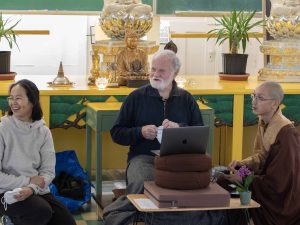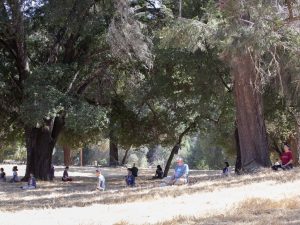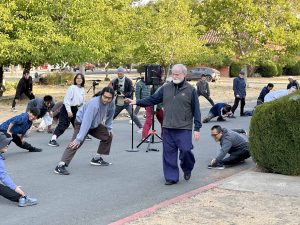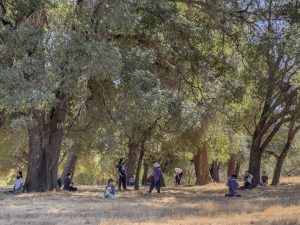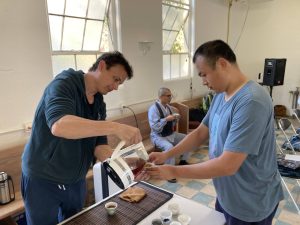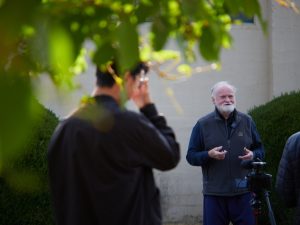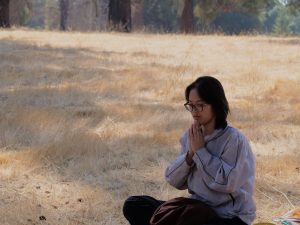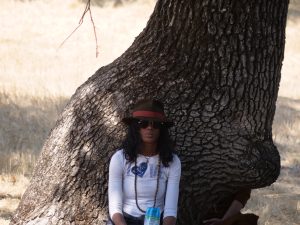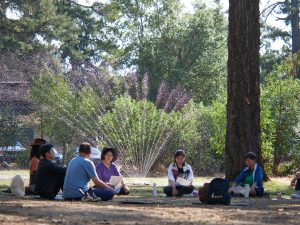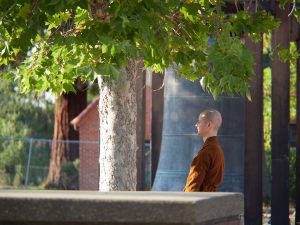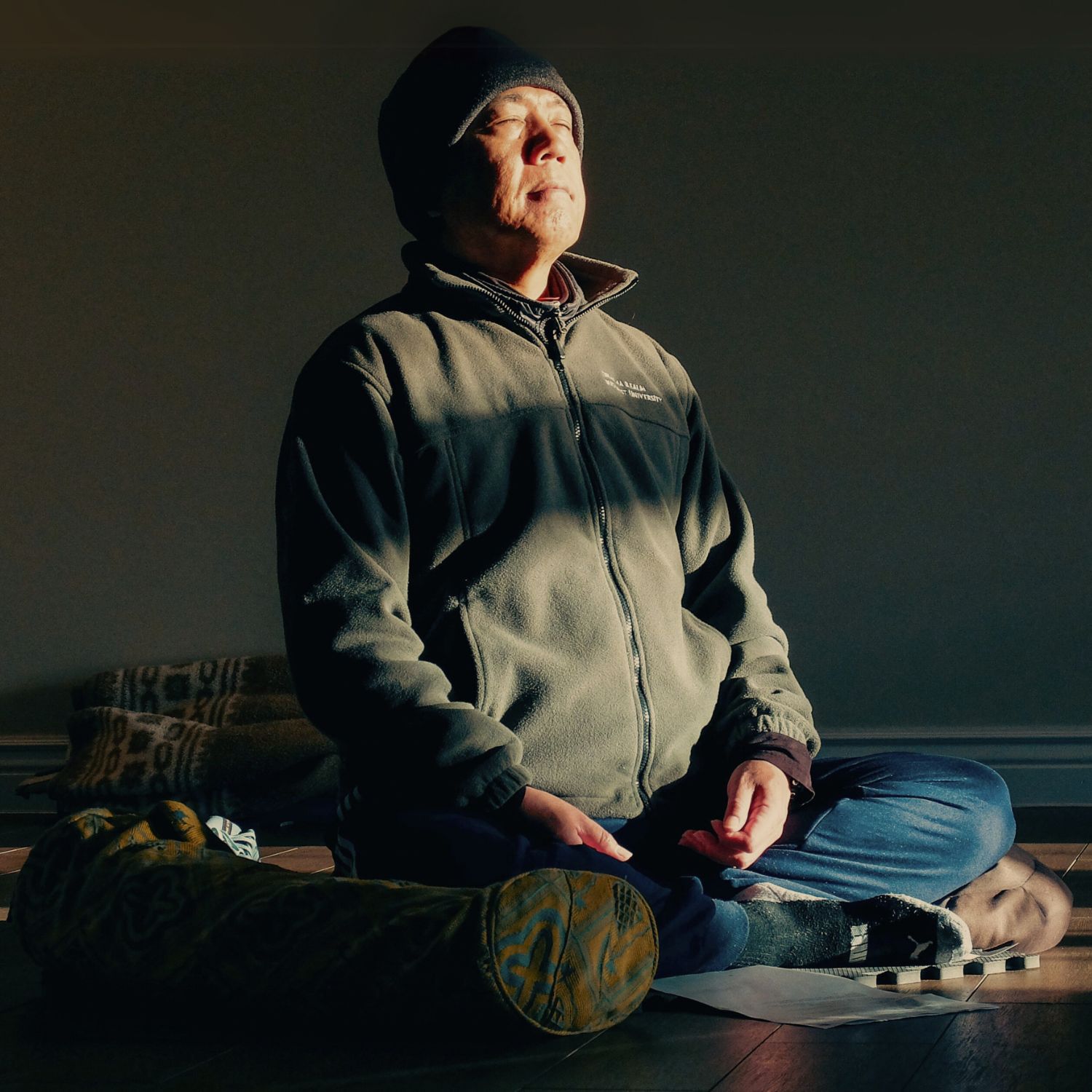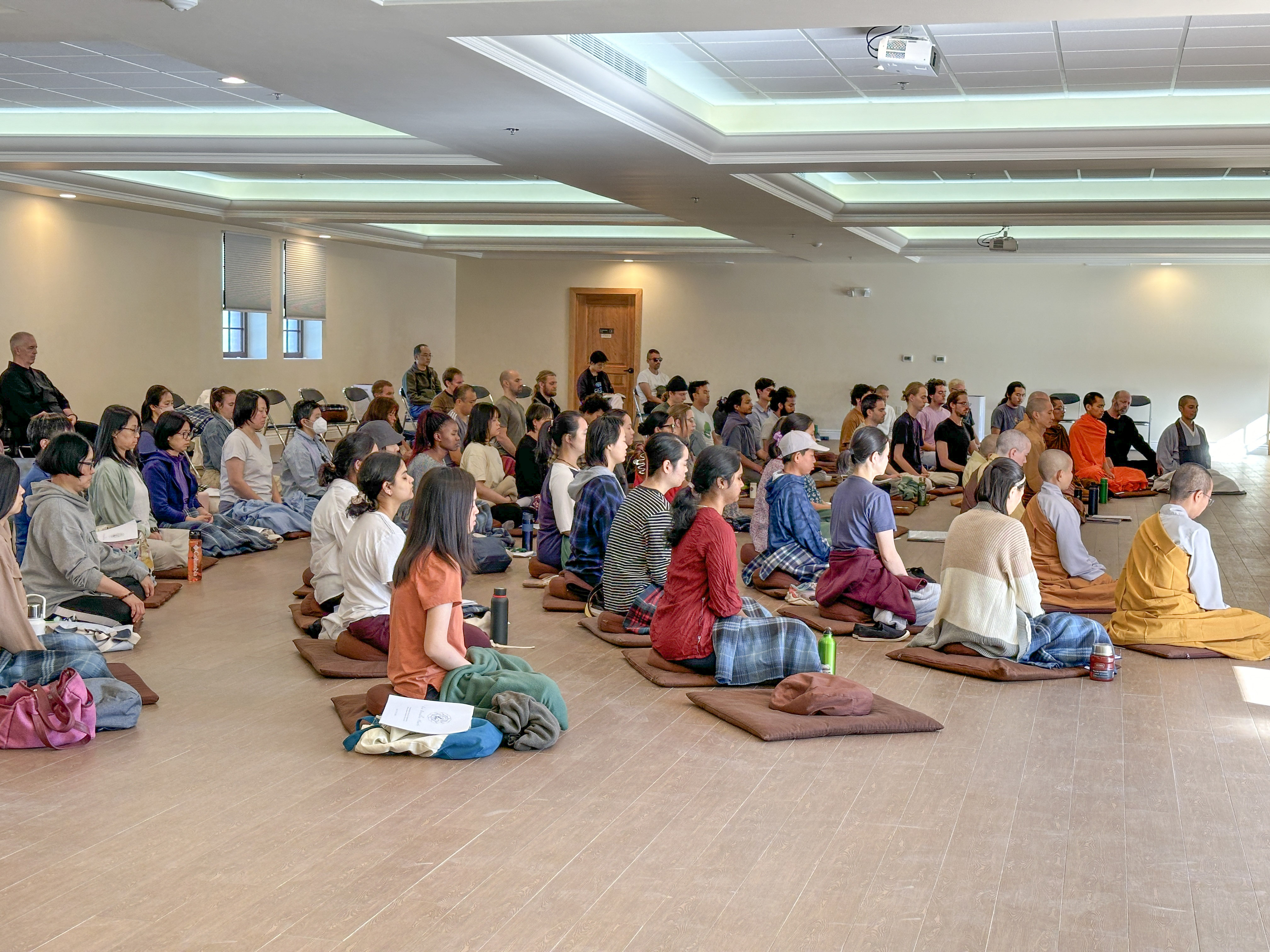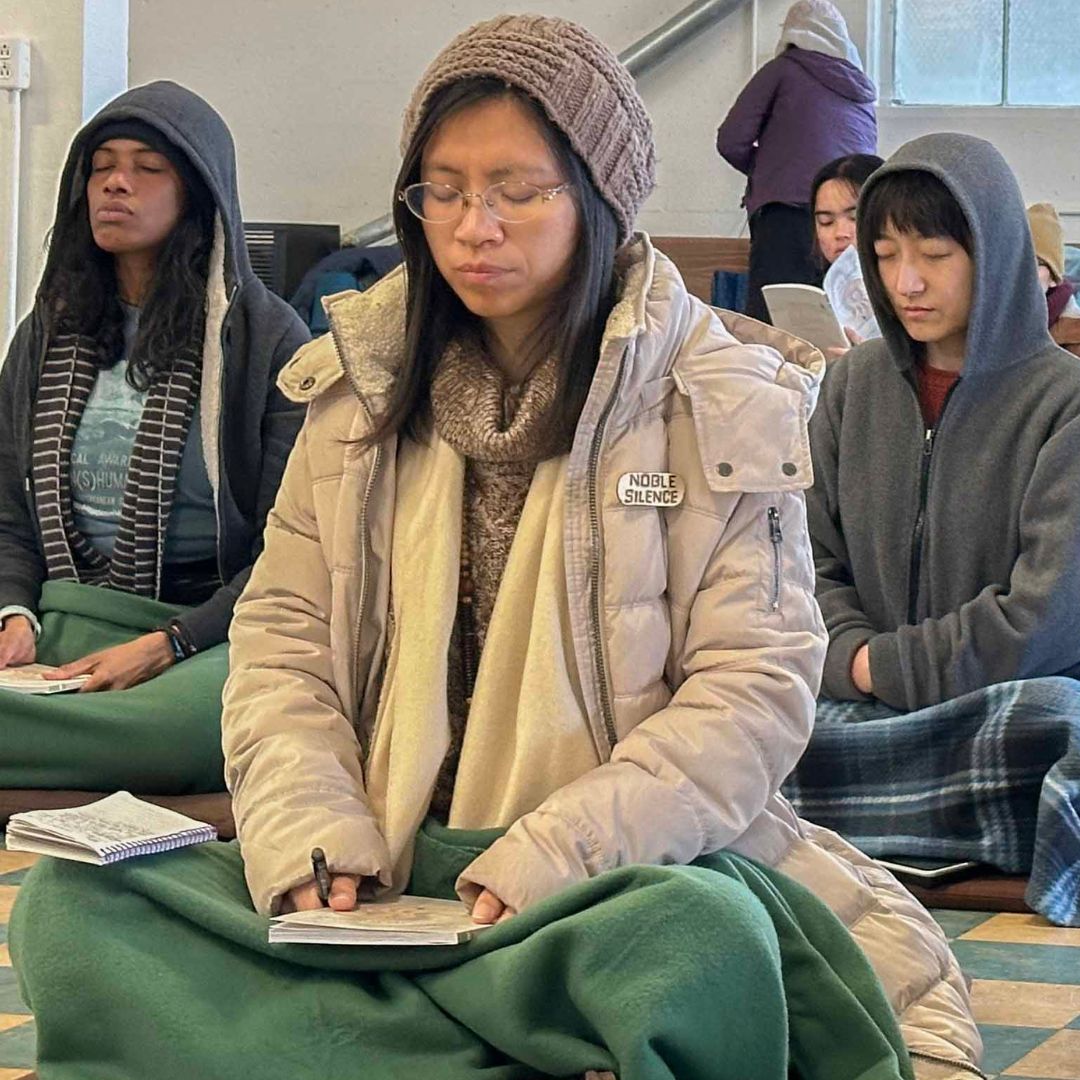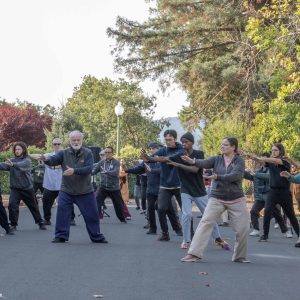
Stillness in Movement & Moving in Stillness
The Fall 2023 Contemplative Exercise Immersion (CEI) took place Sept. 19-22 and drew from:
- Taiji and Daoist philosophy
- modalities of meditation based on movement as well as stillness
- the theme of poised flexibility and “according to conditions”
- and connection/interconnection with Nature
This CEI proposed to work on trying to find our “center”, and remain in it whether in stillness or activity.
Professor Martin Verhoeven discusses this semester’s CEI in the following description.
“Stillness in Movement; Moving in Stillness”: the “doing” of philosophy in Taoist, Taiji, and centered stillness *and movement* modalities of meditation
The practice of contemplation, often equated with sitting meditation, traditionally consisted of something more extensive: the integration of mind and body, thought and emotion, matter, and spirit. As such, contemplation consisted of actual exercises meant to be done, not just discussed or debated over. As Pierre Hadot pointed out, “Spiritual exercises were exercises, because they were practical, required effort and training, and were lived; they were spiritual because they involved the entire spirit, one’s whole way of being.” Spiritual exercises thus were alternately active/passive, mental/physical, solitary/communal, and silent/expressive. They were designed to invigorate, to wake us up, to reorient us to the whole of life, and to make us conscious of our place in the larger order of things.
The modern emphasis on digital and de-natured living, however, has moved us in the exact opposite direction. The proliferation of “connecting technology” has ironically aggravated the split in human wholeness and disconnected us from Nature. This fragmenting tendency all too easily creeps into higher education resulting in sterile learning and disembodied knowing. DRBU purposely set out to recover and advance a more organic system of philosophy, called “activating inherent wisdom.” This approach incorporates intellect, reason, and intuition; and seeks to wed body, mind, and spirit into a unified tool of inquiry.
The fall CEI draws on a traditional contemplative aim and axiom of this approach: integrating stillness and movement; self and Nature. The four-day retreat will consist of movement exercises combined with quiet sitting and shared reflection on selected primary texts. An ancient Taiji text states, “In all your activities and affairs seek stillness in movement and movement in stillness.” The more active part focuses on the body—strengthening and attuning through specific exercises (movement). The quieting part consists of periods of silent observing and calming the mind (stillness). Together, the movement-stillness interweaving results in what is described as “single practice centering”—walking, standing, sitting, lying down, never departing from responsive, liberating awareness.
The physical aspect will be adopted from the traditional 64 Taiji movements. Sometimes called, “moving meditation,” these movements taken together are seen as “doing philosophy”—investigating and activating the subtle powerful link between body and mind. The dynamic coordination of breathing, will, thought and energy not only relieves stress but carries over into a more grounded and mindful way of living. Moreover, this close listening to and harnessing of the physical is a key component of self-awareness, and thus, essential to awakening (mokṣa/bodhi). (This understanding is implicitly or explicitly conveyed in many of the texts we study at both an undergraduate and graduate level.)
The second aspect of this CEI explores a corollary idea: finding oneself in nature and finding nature in oneself. The understanding and implications of the shared existence between humanity and the larger natural world, the interconnectedness and inescapable interpenetration of matter and energy is probably one of the greatest needs and neglected areas of our time. This larger appreciation of our fundamental non-duality begins with the more individual-level sensibility of movement/stillness (self-cultivation), and then expands it to wider reach (great compassion), expressed as “being one with everyone and everything.” When combined: movement-in-stillness, self-in-Nature—this CEI hopes to stimulate a deep reflection on who we are, and who we might be, both in restoring our bodies and minds to wholeness, and in bringing a much-needed medicine to an ailing planet and fractured world.
